Nepal Flag Meaning
The only national flag that is non-rectangular, composed of two stacked crimson pennons with blue borders, featuring a white moon and a white sun. It reflects Nepal’s distinct identity, culture, and Hindu-Buddhist traditions.
- Continent
- Asia
- Adopted
- 1962
- Ratio
- Unique (non-rectangular)
- Colors
- crimson, blue, white
- Designer
- Traditional design codified in the 1962 constitution
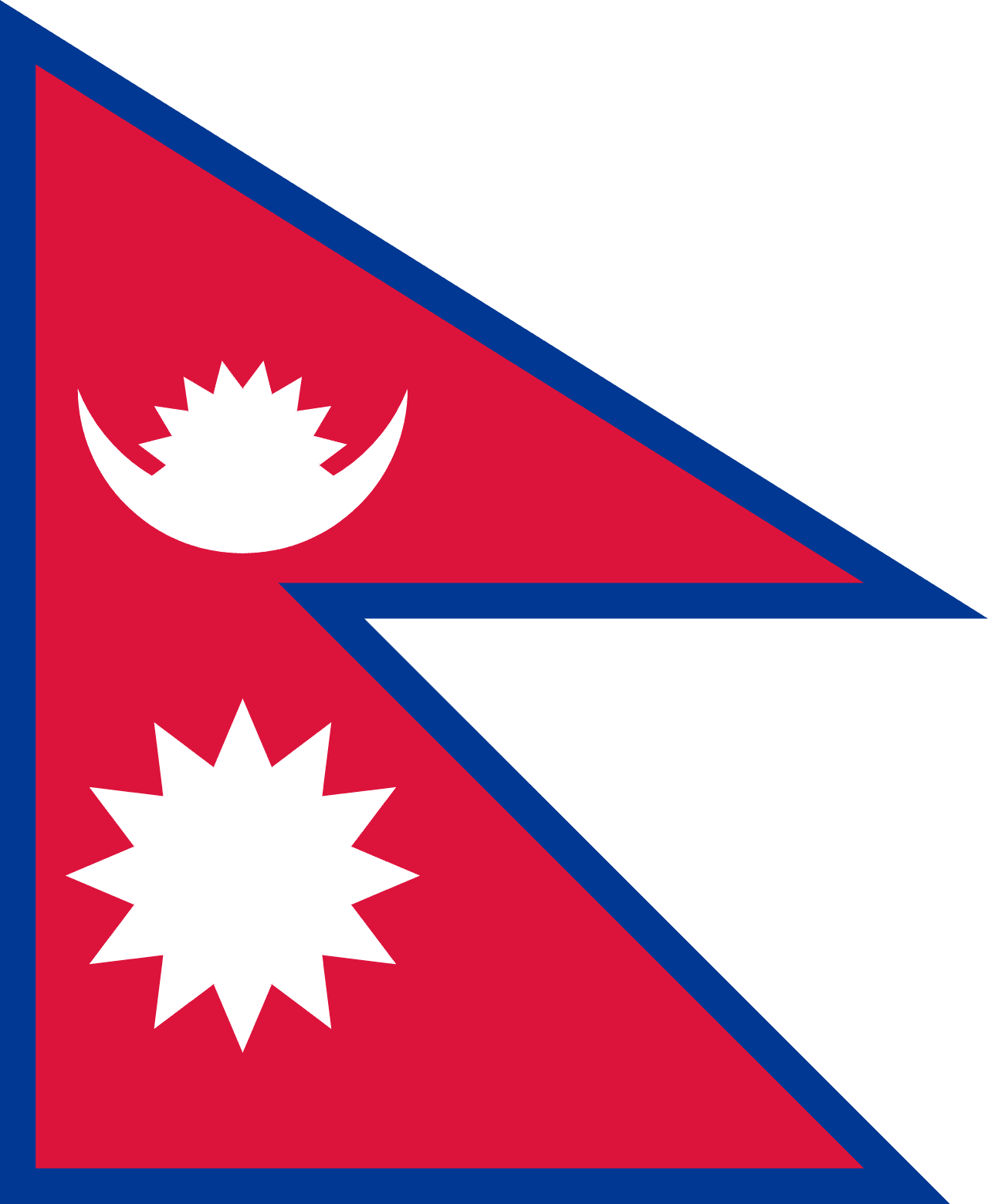
Symbolism
Crimson Field: Represents bravery and is Nepal’s national color.
Blue Border: Symbolizes peace and harmony.
Moon Emblem: Represents calmness and the cool shade of the Himalayas.
Sun Emblem: Represents heat, resolve, and the fierce spirit of the people.
Combined Symbols: Together, they symbolize permanence — that Nepal will last as long as the sun and moon exist.
History
- 18th Century: The pennant-shaped design was used by the Gorkha Kingdom before the unification of Nepal.
- 1768: Prithvi Narayan Shah unified Nepal under the Shah dynasty, retaining the pennant flag.
- 1962: The current version was codified in Nepal’s constitution, with modernized emblems.
Trivia
- Nepal’s flag is the only national flag that is not rectangular or square.
- Its mathematical construction is specified in the constitution.
- The moon and sun once had human faces, but these were removed in 1962.
- The crimson red is also the color of the rhododendron, Nepal’s national flower.
- The flag’s shape reflects traditional Hindu-Buddhist pennants seen in temples.
Related Countries
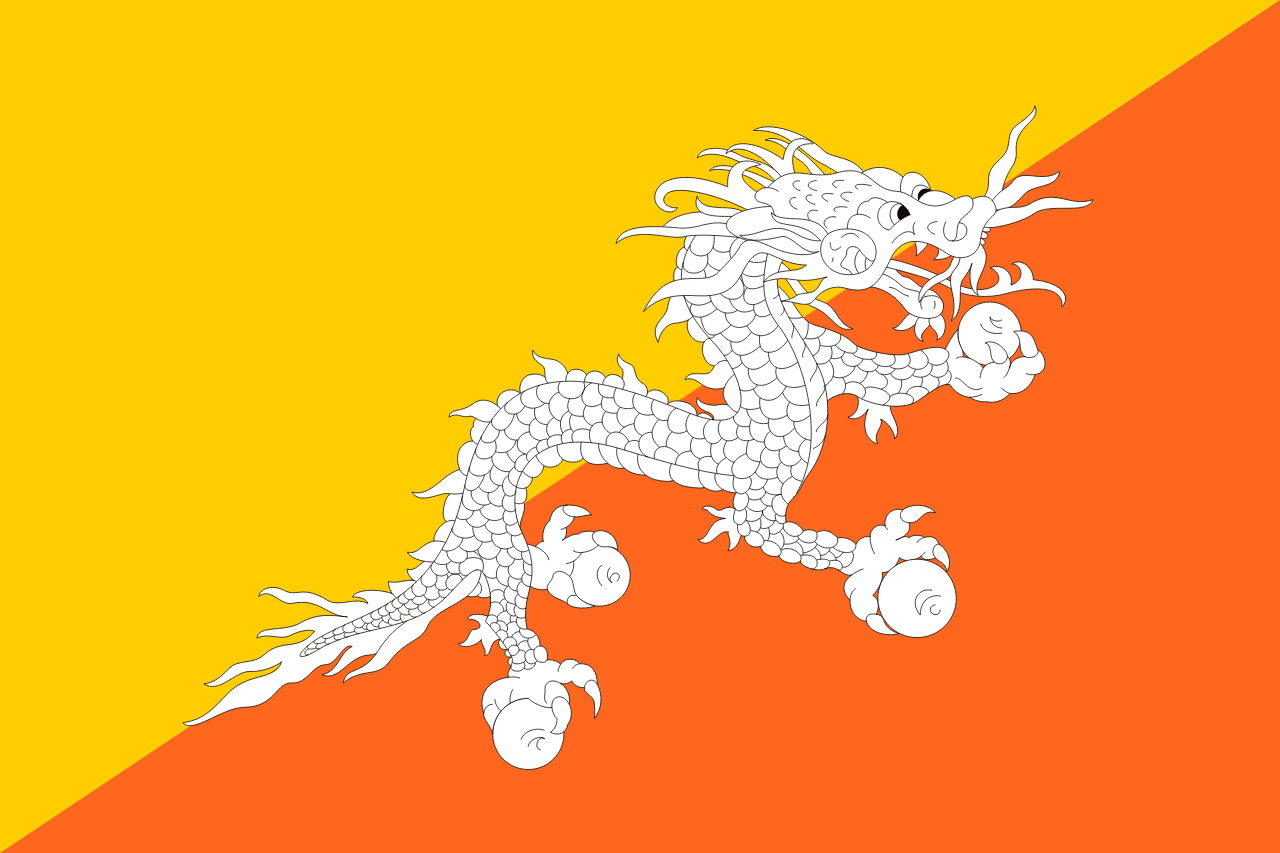
Bhutan
Asia
Divided diagonally with orange in the upper triangle and yellow in the lower triangle, featuring a white dragon (Druk) in the center holding jewels in its claws, representing the spiritual and temporal power of Bhutan and the Thunder Dragon that gives the country its name 'Land of the Thunder Dragon.'
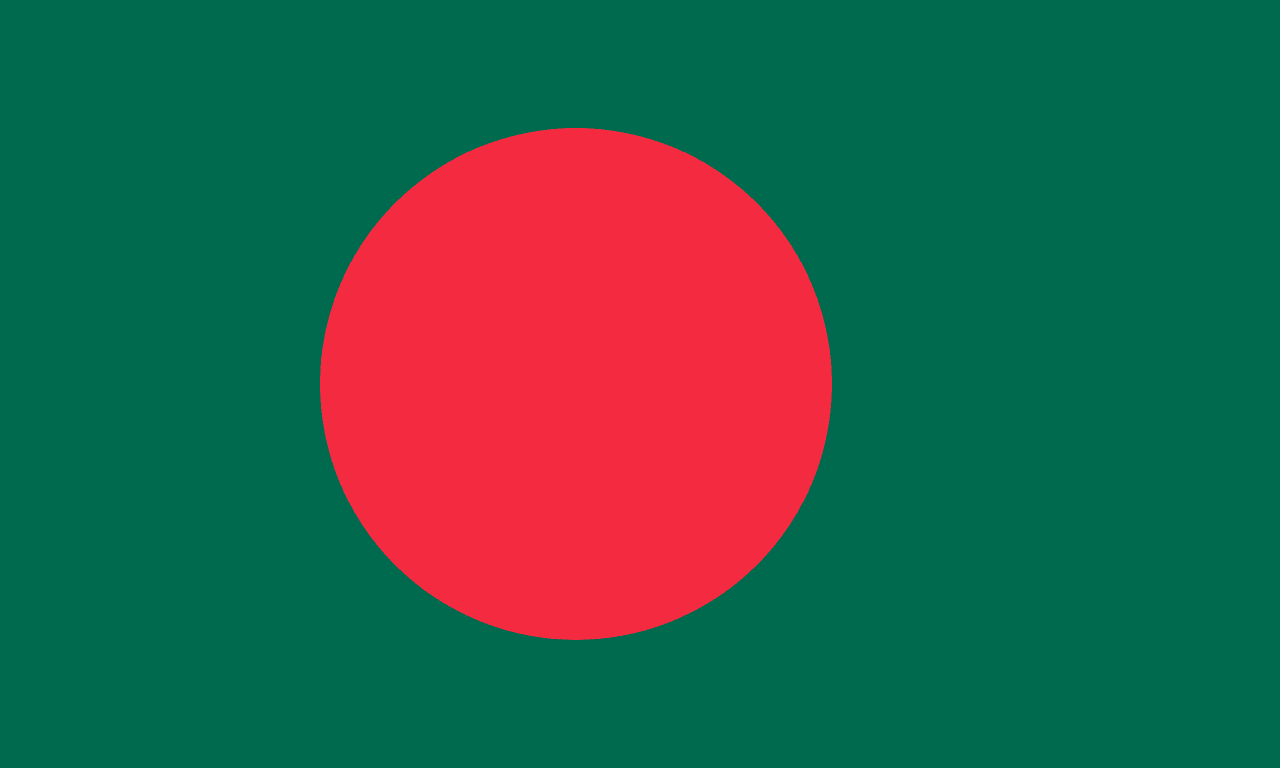
Bangladesh
Asia
A dark green field with a red circle positioned slightly toward the hoist side, representing the lush Bengali landscape and the sun rising over Bengal, as well as the blood shed during the Liberation War of 1971 and the new dawn of independence.

India
Asia
Three horizontal stripes of saffron, white, and green with a navy blue Ashoka Chakra (24-spoke wheel) in the center, representing courage and sacrifice, peace and truth, faith and fertility, and the eternal wheel of law in Indian philosophy.
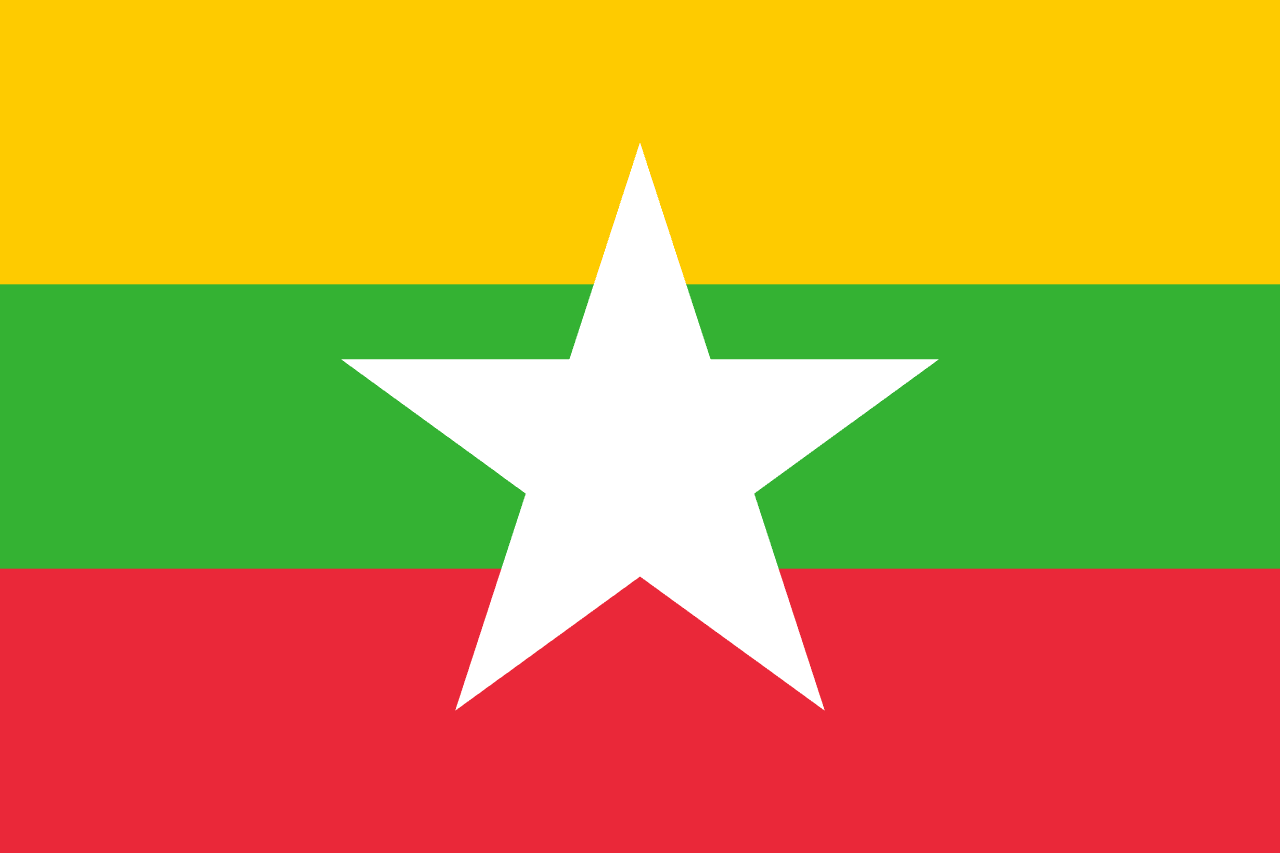
Myanmar
Asia
A horizontal tricolor of yellow, green, and red with a large white five-pointed star in the center. Adopted in 2010, the flag symbolizes unity and a new era for Myanmar.
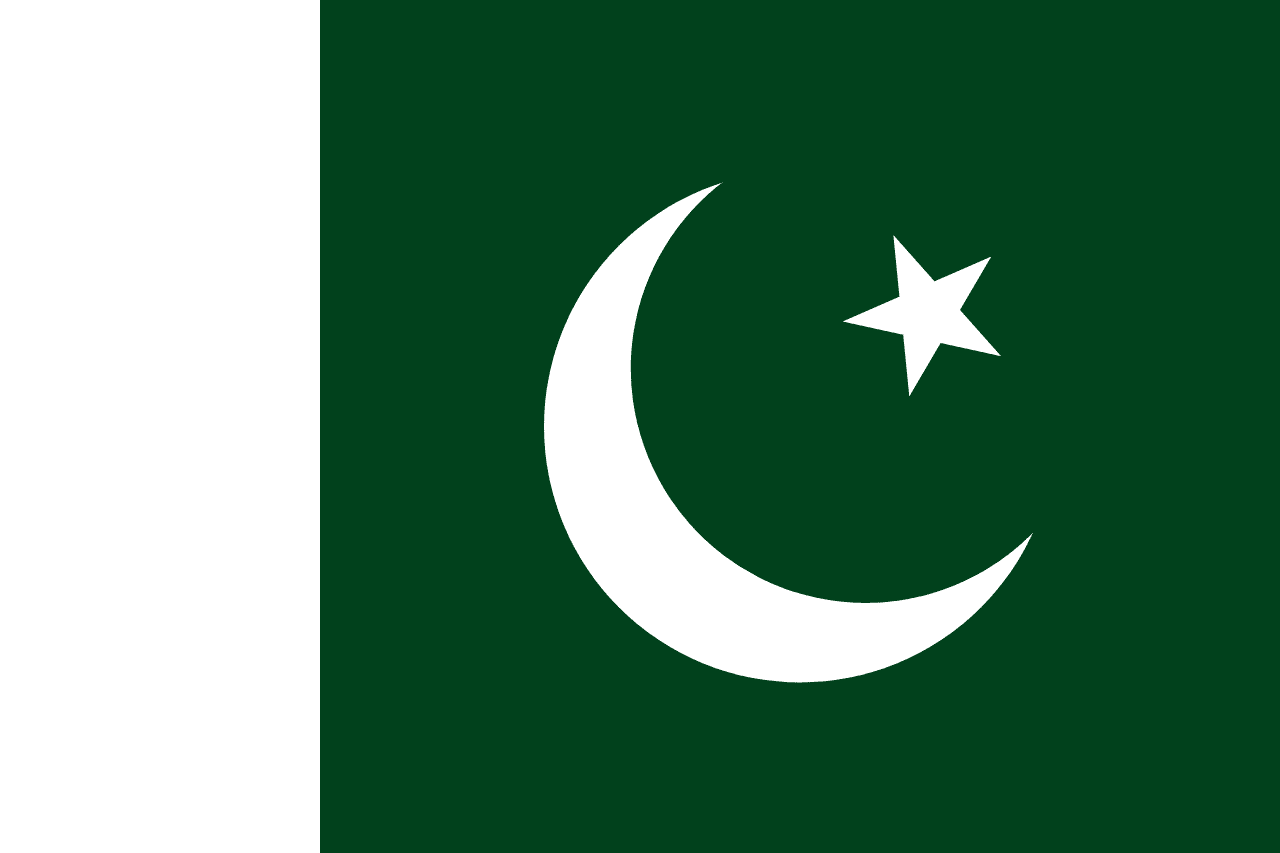
Pakistan
Asia
A green field with a white vertical stripe at the hoist, a white crescent, and a five-pointed star. The flag symbolizes Islam, religious minorities, and the guiding ideals of the nation.
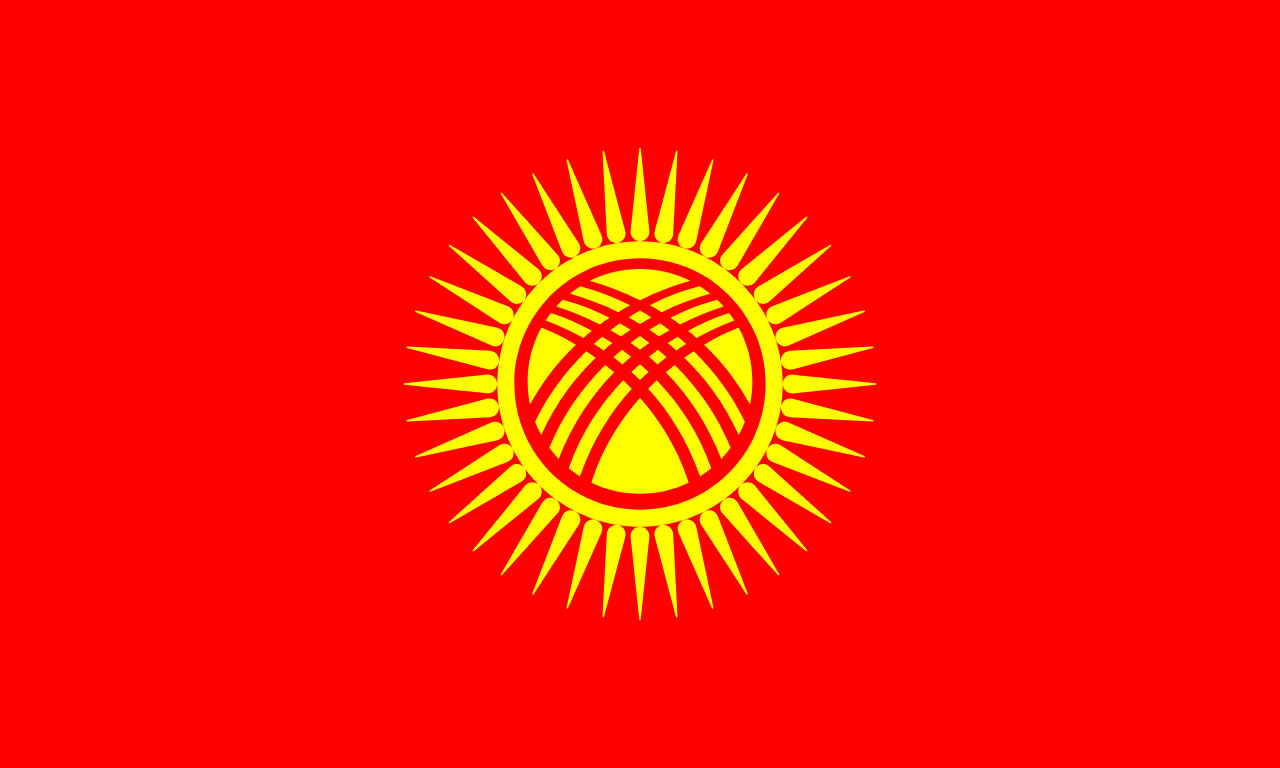
Kyrgyzstan
Asia
A red field with a yellow sun featuring 40 rays and a tunduk (yurt crown) in the center, representing the nomadic heritage, unity of 40 tribes, and the traditional dwelling of the Kyrgyz people in this mountainous Central Asian nation.